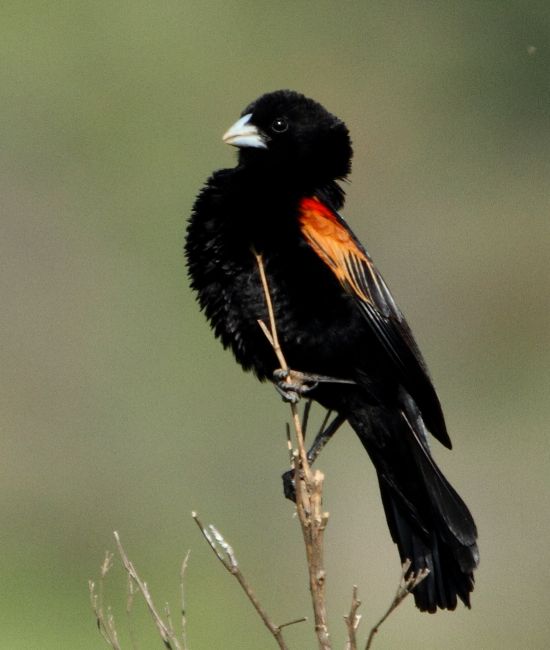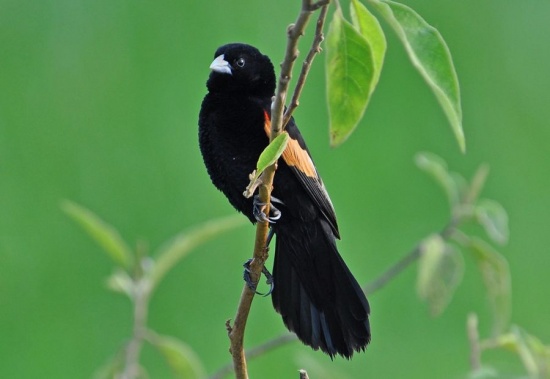- Euplectes axillaris

Photo by Alan Manson
Location: Cedara, KwaZulu-Natal, South Africa; December 2011
Identification
Length 15-17 cm. A short-tailed widowbird.
Breeding male: Black with red 'shoulders' and buff greater wing-coverts. The tail is fanned only in display. Non-breeding male: Brown, streaked blackish; with black primaries and red 'shoulders'. Female: Brown with blackish streaking above and reddish 'shoulders'.
Distribution
Widespread throughout Africa:
Western Africa
Mali, Burkina Faso, Nigeria, Niger, Chad, Cameroon, Central African Republic, Equatorial Guinea, Gabon, Congo, Democratic Republic of Congo.
Eastern Africa
Sudan, Ethiopia, Somalia, Kenya, Uganda, Rwanda, Burundi, Tanzania, Zanzibar, Mafia Island, Zambia, Mozambique, Malawi.
Southern Africa
Namibia, Botswana, Zimbabwe, South Africa, Lesotho, Swaziland.
Taxonomy
Euplectes axillaris has five subspecies:[1]
- E. a. bocagei
- E. a. traversii
- Highlands of Ethiopia
- E. a. phoeniceus
- E. a. zanzibaricus
- Malawi and Mozambique south to eastern South Africa
Image:Fan_tailed_red_shouldered_widowbird_volker_sthamer_Aug2010.jpg
Habitat
Tall grassland, reedbeds and sugar cane fields.
Behaviour
Non-breeding birds forage in large flocks (often with other seed-eating species). Diet is mainly grass seeds; also insects.
Vocalisation
The male sings from an elevated perch and in flight: a series of twittering and chirping sounds.
Breeding
Polygynous; male defends a territory of up to 0.6 ha and breeds with up to four females in a season. The oval nest is built using grass and has a side-top entrance. It is located in marsh or rank vegetation within 0.8 m of the ground. Two to three eggs are incubated for 12-14 days by the female; the nestling period is 15-16 days.
References
- Clements, JF. 2008. The Clements Checklist of Birds of the World. 6th ed., with updates to December 2008. Ithaca: Cornell Univ. Press. ISBN 978-0801445019. Spreadsheet available at http://www.birds.cornell.edu/clementschecklist.
- Hockey, PAR, WRJ Dean, and PG Ryan, eds. 2005. Roberts' Birds of Southern Africa. 7th ed. Cape Town: John Voelcker Bird Book Fund. ISBN 978-0620340533
- Sinclair, I and P Ryan. 2003. Birds of Africa South of the Sahara. Princeton: Princeton Univ. Press. ISBN 978-0691118154
Recommended Citation
- BirdForum Opus contributors. (2024) Fan-tailed Widowbird. In: BirdForum, the forum for wild birds and birding. Retrieved 31 October 2024 from https://www.birdforum.net/opus/Fan-tailed_Widowbird
External Links






